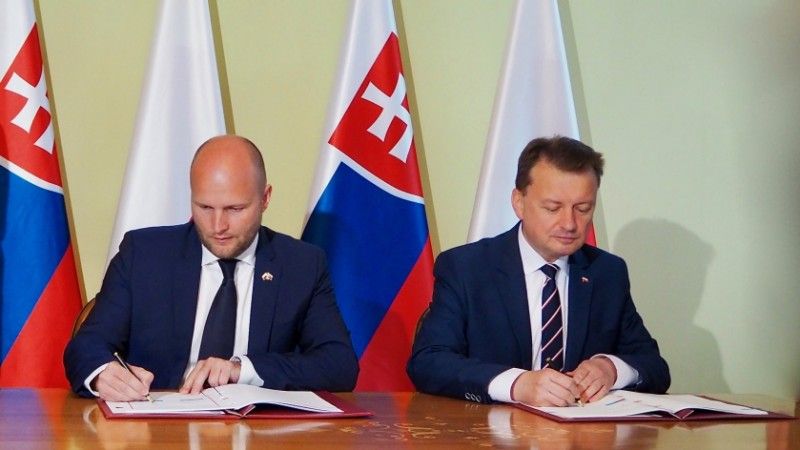Polish and Slovak Air Forces to Cooperate: Joint Air Defence and Common Fleet of F-16s?

We are building a defence system jointly, that would guarantee security to Poland and Slovakia and the NATO eastern flank as a whole, stressed Defence Minister Mariusz Błaszczak, during his meeting with his Slovak counterpart - Jaroslav Nadem. The Ministers have signed a bilateral memorandum of understanding during the meeting, on the cooperation of military aviation during training, exercises, and NATO missions.
During the official portion of the visit that the Slovak official made to Warsaw, the matter of a good Polish-Slovak relationship and the necessity to establish cooperation have both been emphasized. Jaroslav Nad stressed that the relationship between the states has been very good, listing the cooperation between the special operations components or the memorandum of understanding signed as the examples.
The memorandum mentioned by the Slovak official pertains to cooperation between the Polish and Slovak air forces, in several key areas. These include training, exercises, and air defence. The memorandum of understanding creates a framework that needs to be complemented with specific joint actions. It paves the way, however, towards mutual use of the partner’s airbases and joint training/exercises and activities within the framework of NATO NATINAMDS (that is placed at the foundation of NATO Air Policing taking place in both the Polish airspace, as well as in the Baltic States).
This is quite relevant as Slovakia is soon going to become a user of fourteen F-16 Block 70 jets replacing the legacy MiG-29s. Slovakia is certainly will be eager to make use of the Polish experience regarding the type-transition. Joint training or exercises will undoubtedly create a certain degree of energy in collaboration between the air forces. Noteworthy, not only does Poland have the F-16C/D jets at its disposal, as the Polish Air Force also operates the M-346 Bielik AJTs tailored to train pilots for the 4th generation Mutli-Role Combat Aircraft, like F-16. It cannot be ruled out that the Polish-Slovak cooperation could pave the way towards Bratislava’s involvement in NATO Air Policing initiatives.
The fact that the head of the Slovak MoD also went to Bydgoszcz where the WZL No. 2 facility is located also cannot be disregarded. The WZL facility has some know-how at its disposal allowing it to maintain and support the F-16s. This matter is quite important for Bratislava, especially considering the small size of its fleet that is going to remain at its disposal as early as in 2024.
Both nations in question are located at the eastern flank of NATO and they are involved in programmes such as NATINAMDS (NATO Integrated Air and Missile Defence System). Both Poland and Slovakia have post-Soviet missile systems at their disposal currently, facing a necessity to replace them with solutions that would address modern threats adequately. Both nations operate the Kub/SA-6 SAM systems for instance. Poland aims to replace these within the Narew project, but no final decisions have been made.
The joint activities within that scope could have an impact on the cohesion of the air defence system in the region, also benefiting from the scale if a successful joint SHORAD acquisition comes into play. No specific declarations have been made within that scope. Nonetheless, one could speculate that those actions fall well within the framework of the memorandum.
The circumstances of the visit also played an important role here. Poland has been the leader of the V4 [Visegrad Group] since July this year. It is one of the priorities for V4 to cooperate on the exchange of experiences relating to the COVID-19 pandemic. The work on the establishment of an EU battlegroup would be continued. The first standby period is planned to begin in early 2023. Both Ministers stressed the good relationship between the nations. Jaroslav Nad has been the first foreign guest hosted by Minister Błaszczak, following the epidemic.
